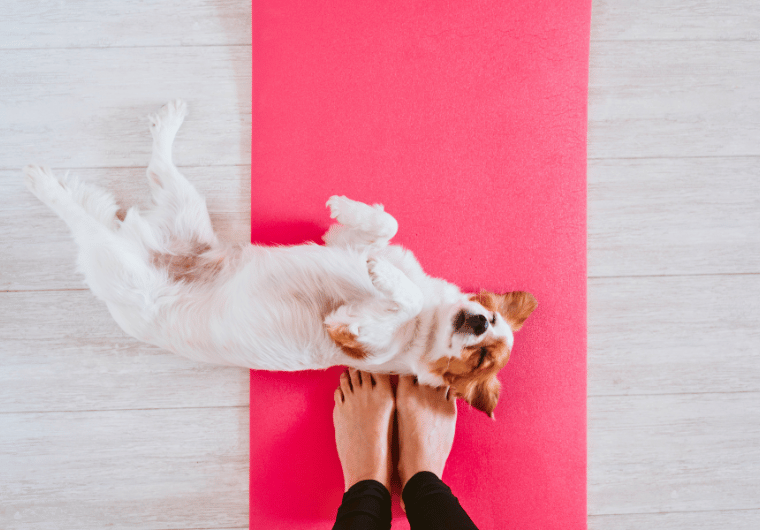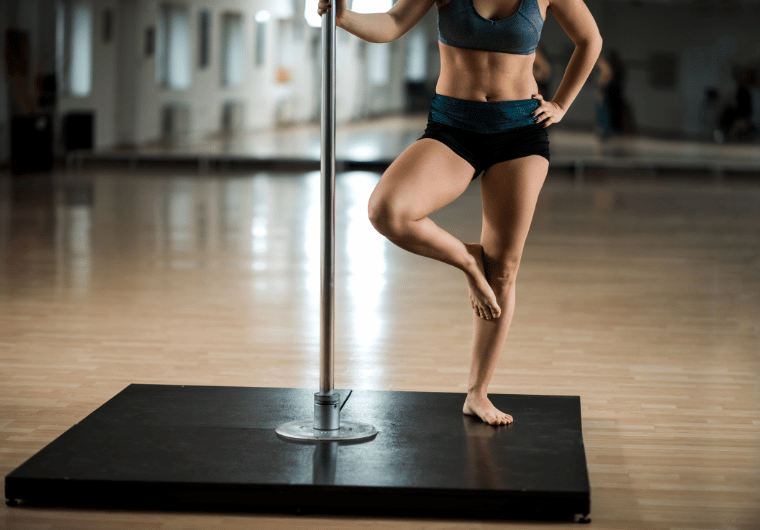11 Beginner Running Tips That Will Unlock Your Running Potential

Lacing up your running shoes for the first time is the start of an exciting running journey.
It’s about embracing the magic found in the simplicity of running and the freedom it offers, the rhythm it creates, and the challenges it presents.
For newcomers, the running world might seem daunting, but fear not! With the proper guidance, you can avoid common pitfalls and prevent injuries.
In this post, I am excited to share the beginner running tips I followed at the start of my journey, hoping they’ll inspire and support you as you start yours.
1. The Fear of Getting Started
The fear of starting a running journey often comes from overthinking the process, the outcome, and the challenges ahead. This can paralyse a new runner and make starting seem overwhelming.
Just Start Without Overthinking
The first step is the hardest. The key to getting over this initial hurdle is to set a simple, achievable goal to give yourself direction, whether it’s a set time you want to run or a loop around your neighbourhood.
Keep your focus on the immediate, not the long-term, scary picture. Each run is a step forward, and that’s what matters most.
Build a Sustainable Habit
True runners aren’t those who sprint off from the starting line but those who lace up day after day, building a consistent running habit.
As a new runner, start with a realistic schedule of 3 times a week, and gradually increase as your fitness improves. The more you run, the better you get.
2. Warming Up and Cooling Down
One of the most important beginner running tips for a new runner is warming up before every run and cooling down post-run. I’ve been running for over 20 years, and it remains a habit I keep.
Respect the Warm-Up
Warming up shouldn’t be ignored. It’s vital to prepare your body for the activity ahead. A 5-10 minute brisk walk, a gentle jog, and dynamic stretches get your blood flowing and loosen up your muscles, reducing the chance of injury.
The Cool Down is Important
Post-running stretches aren’t just a luxury; they’re necessary. After you run, your muscles are warm and pliable, so it’s a great time to boost flexibility and aid recovery. Spend 5-10 minutes doing static stretches, focusing on the muscles you used the most.
Beginner Running Tips





3. Progressing Slowly
As a beginner runner, the temptation to run long distances at a fast pace may be strong. However, follow these guidelines to ensure a safe and enjoyable running experience and to prevent injuries.
Start with the Run/Walk Method
The run/walk method is a tried and true approach that lets you build up your running endurance without overloading your body.
Start with short run intervals and gradually increase them while decreasing your walk intervals.
This method respects your fitness level and paves the way for longer, sustained runs. It’s tempting to chase numbers, but gradually building up your distance or speed is more rewarding and safer.
The 10% rule, which suggests not increasing your weekly mileage or running time by more than 10%, helps prevent burnout and overuse injuries.
Consistency Over Intensity
As a beginner runner, your focus shouldn’t be on speed or distance but on establishing a consistent running schedule. This will allow your body to adapt to the new demands you’re putting on it.
Listen to Your Body
Everybody is unique, and what works for one person may not work for another. Please pay attention to your body, be aware of whispers before they become shouts.
If you feel signs of overexertion or pain, it’s okay to slow down or take an extra walk break.
4. Mastering Proper Running Technique
Many new runners think putting one foot in front of the other is all there is to it. But there’s an art to running efficiently.
Beginner Running Tips on Form
- Posture: Keep your head looking forward, not down at your feet. This aligns your neck and spine, promoting better posture and breathing. Your gaze should be a few feet ahead, not directly in front of your feet. Keep your shoulders relaxed and down, away from your ears, to avoid tension.
- Foot strike: Aim to land midfoot with each step, underneath your body’s centre of mass. Avoid overstriding (landing with your foot too far in front of your body) or heel striking (landing on your heel first), leading to inefficiency and potential injury.
- Arm swing: Your arms should swing naturally back and forth in line with your body. Keep your elbows bent close to 90 degrees and your hands relaxed. Avoid excessive arm movement across your body or tensing your fists. Breathing: Develop a rhythmic breathing pattern that feels natural for you. Focus on deep belly breathing, inhaling and exhaling steadily and evenly. It helps to sync my breathing with my steps, using the 2:2 rhythm of inhaling and exhaling for two steps.
- Cadence: Your stride should be natural and comfortable, not too short or long. Aim for a cadence (steps per minute) of around 160-180. Shorter, quicker steps are more efficient than longer strides. You can try metronome apps to help guide you by providing audio cues on how fast to move your feet.
5. Seek Out New Running Spots
Changing up your running routine can combat boredom. Trying new trails and terrains reignites enthusiasm and provides different challenges and rewards to your training.
Variety is the Spice of Life
Running the same route day in and day out can get boring. Trying new trails and neighborhoods or running in different directions from your house can bring variety and mental stimulation. A fresh backdrop can reignite your enthusiasm and sense of adventure.
Adapt and Conquer
Different terrains present new challenges and rewards. Soft natural paths can be easier on the joints, while the steep trail inclines provide a great cardio and strength workout. Don’t avoid these hurdles; use them to your advantage in your training.
6. Nutrition and Hydration
You may not need to carb-load or guzzle down electrolytes for shorter runs, but staying hydrated is key. It’s a fundamental practice to make sure you’re drinking enough water throughout the day.
A handheld water bottle or a hydration belt can be helpful during runs as distances increase.
And if you’re running in the heat or tend to sweat a lot, adding a high-quality electrolyte supplement can make a difference in how you feel during and after your runs.
I personally use Liquid I.V. to support hydration and recovery. It’s clean, effective, and gentle on the stomach.
Pre-Run Fuel
It’s generally advised not to eat a heavy meal before running to avoid cramping. But a light snack, especially if you’re running longer distances, can provide the energy you need. I like bananas, protein bars, and toast with peanut butter as pre-run snacks.
Post-Run Recovery
Recovery starts the moment you stop running. Refuel with a healthy mix of protein and carbohydrates when you finish to help your muscles recover.
Post-run snacks like a bagel with peanut butter, cottage cheese with fruit, or a smoothie can be convenient and delicious.
7. Staying Focused and Not Getting Discouraged
Running clears the mind, connects you with your surroundings, and focuses you on the present. Even if every run is imperfect, the effort is a win as a new runner.
Finding Your Zen
Running is a solo pursuit that can also be very meditative. Use your runs to clear your mind, tune in to your body, and connect with the world.
Focus on the present and zap away any negative thoughts that may creep in. Running has helped my mindset over the years, and if I miss a couple of days because of travel or whatnot, I can feel the difference.
Celebrate Every Run
Not every run will feel like a runner’s high, and that’s okay. As a beginner runner, remember there’s victory in just lacing up and heading out the door. Celebrate yourself for the effort; progress in running is built on these small, consistent achievements.
8. Keeping Your Running Motivation
Invest in the essentials that will enhance your running experience. A good pair of running shoes, moisture-wicking clothing, good running socks, and a supportive sports bra (for the ladies) can make a big difference in your comfort and performance.
Remember, support is key from head to toe.
Set Goals and Measure Progress
Setting goals, running your first 5k, or simply improving your breathing technique, and tracking your progress can motivate you.
Smartphone apps, running watches, and training logs are great tools for setting targets and monitoring your progress.
Get Competitive
Whether you sign up for a race or set a personal challenge, healthy competition with others or yourself can be motivating.
Lower Your Minimum Time
On low motivation days, commit to running for just 10 minutes. Often, getting started is the hardest part, and you may find yourself willing to run longer once you’ve started.
Reward Yourself
Set up a reward system for achieving your running goals. This could be anything from a relaxing bath after a long run to a new pair of running shoes after reaching a mileage milestone.

9. Joining a Running Club
Running can be a solo activity, but it doesn’t have to be. Joining a running group or connecting with a running buddy can be a great support system, offering helpful running tips for beginners based on their experience.
The Benefits of a Club
Running with a group can give you social interaction, accountability, and the opportunity to learn from experienced runners.
You’ll also try new routes and maybe even find some friendly competition. I love my running club. I not only stay motivated by running with the group regularly, but I’ve also learned so much from them.
Virtual Communities
With the benefits of the online world, you don’t need to join a local group. Virtual communities can also provide support, advice, and motivation for your running journey.
Many Facebook groups for new runners offer support and knowledge to help you along your way.
10. Safety Tips for the New Runner
Running is great for health and wellness, but safety is key. No beginner running tips post would be complete without them.
Follow these safety tips, whether you’re an experienced or new runner, to ensure your running experience is enjoyable and safe.
Carry ID and Phone
Always carry some ID and a phone. In case of an emergency, responders will be able to identify you. Carrying your cell phone during runs allows you to call emergency services, report harassment to the police, and share your location with a friend in case of an emergency. Safety apps like OneScream, BSafe, RoadID, and Red Panic Button offer security.
Know Basic Self-Defense
Basic self-defense techniques can make you feel more confident and secure. Consider taking a self-defense class for runners.
Protect Yourself
Devices like the Nathan SaferRun Ripcord Siren can draw attention in emergencies by making a loud noise and signaling for help. Go Guarded offers a $15 ring with a concealed blade that can be used for self-defense if needed.
Avoid Traditional Headphones
Music can energize your runs, but traditional in-ear or over-ear headphones can cut you off from critical environmental noises, potentially putting you at risk of traffic, wildlife, or other hazards. You don’t need to run in silence, though.
Consider switching to open-ear designs, such as the Shokz OpenRun Pro, which are designed not to block your ear canal and can help you stay aware of your surroundings while enjoying your music safely.
Enable Emergency Features on Your Watch
Enabling emergency features on your smartwatch can be crucial in unexpected situations, providing quick access to help when needed.
Be Visible: If you’re running early in the morning, late at night, or in the evening, wear bright colors and reflective gear to increase your visibility to drivers, cyclists, and other runners.
Consider using a headlamp or carrying a flashlight to see your path.
Choose Your Route
Opt for well-lit, populated routes and avoid dangerous or isolated areas, especially if running alone. Familiarize yourself with the area you’ll be running in and vary your routes to avoid becoming too predictable.
Tell Someone
Always tell someone your running route and expected return time. In an emergency, someone will know where to look for you.
Run Against Traffic
When running on roads, face oncoming traffic. This makes you more visible to drivers and gives you a better chance to react to any potential danger.
Stay Alert
Avoid using headphones or loud music that could prevent you from hearing approaching vehicles, cyclists, or potential threats. Always be aware of your surroundings.
Follow Traffic Signals
Obey all traffic signs and signals. Make eye contact with drivers before crossing intersections to ensure they see you.
Trust Your Instincts. If something doesn’t feel right, trust your gut and avoid it. Safety always comes first.
Run with a Friend
Whenever possible, run there. There’s safety in numbers, and running with someone can make your runs more enjoyable.
11. Enjoying the Journey
The last of my beginner running tips is to enjoy the process. Running isn’t just about fitness; it’s about experiencing the world around you differently.
Take time to appreciate your surroundings, your improvements, and the sense of calm that can come with each run.
Reflect on Your Runs
After a run, take a moment to reflect on how you felt, the scenery, and any milestones you may have reached. This reflective practice can help you stay present and enjoy your running more.
Celebrate Your Progress
Every step is a step forward, no matter how small. Celebrate milestones like your first mile, your first race, or consistently running for a certain period of time. These acknowledgments will keep you motivated to continue your running practice.
You Have Everything It Takes to Succeed
I hope you found some useful beginner running tips and insights to help you start your running journey. Remember, every runner has a path; as a new runner, it’s up to you to define yours.
Consistency, patience, and perseverance are key to your running journey goals. Embrace the challenges and celebrate your progress.
Keep seeking resources and advice from other runners, try new routes and techniques, and most importantly, listen to your body as it adapts to this new form of exercise.
The running community is full of passionate people who are always willing to offer support and encouragement. Don’t be afraid to join a local running club or sign up for a race.
These will push you out of your comfort zone and connect you with like-minded people who love the sport.
No matter where you are on your journey, remember that running’s beauty is in its ability to challenge and transform us physically and mentally.
If you’re still unsure about taking the leap into running, know I believe in you, and you CAN do this. Your running journey starts now!
Leave your tips, questions, or feedback in the comments below. Let’s support each other!
Share or pin this to inspire another woman to lace up and start her running journey.

Last update on 2025-12-30 / Affiliate links / Images from Amazon Product Advertising API









Great tips! I didn’t even know about the “foot strike” importance. I will remember that next time I go for a run. Really helpful, thanks for sharing!
I didn’t either when I first started. There were many little things I learned along the way. Thank you for your comment!
Great tips for those of us just starting out on a running journey. I like the idea of joining a running club.
Joining a running club was one of the best things I did. It helped to keep me motivated, and we would meet up and run in new places. Thank you for your comment.
Great tips, I don’t run a lot but will keep this in mind in case I need them in the future. Love your post!
Thank you for your comment!
I have recently started incorporating running into my weekly routine. Therefore, this article is very useful to read!
I am so happy you enjoyed it! Thank you for your comment.
Thank you for these valuable insights! To be honest, I’ve always found running to be quite challenging. However, with my new commitment to a healthier lifestyle and workout programs, I’m definitely inspired to give it a try. Your tips are greatly appreciated!
Thank you for sharing these tips for beginner runners! I’ve never been a runner, I’m more of a yoga/Pilates and walking person. But this gave me courage to possibly start running in the future!
Great tips regarding running. Thank you for sharing. 😊
Pastor Natalie (ExamineThisMoment 😊
Letstakeamoment.com